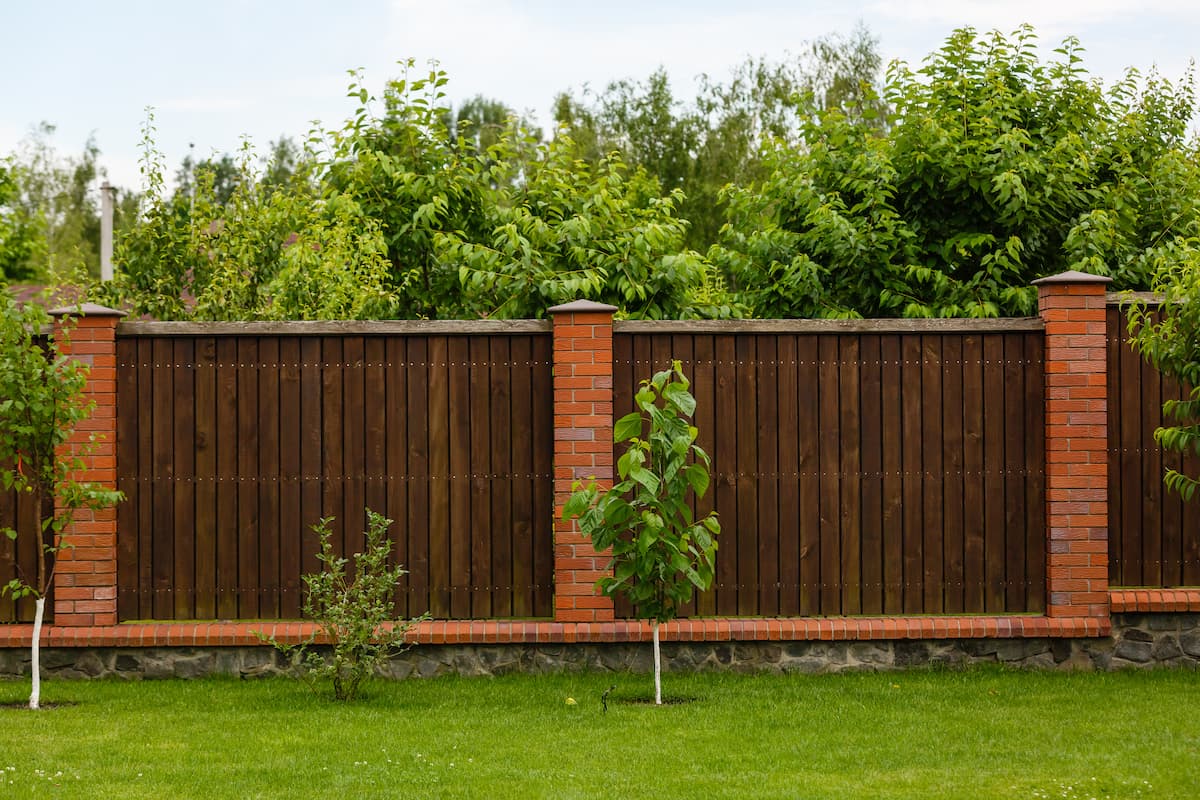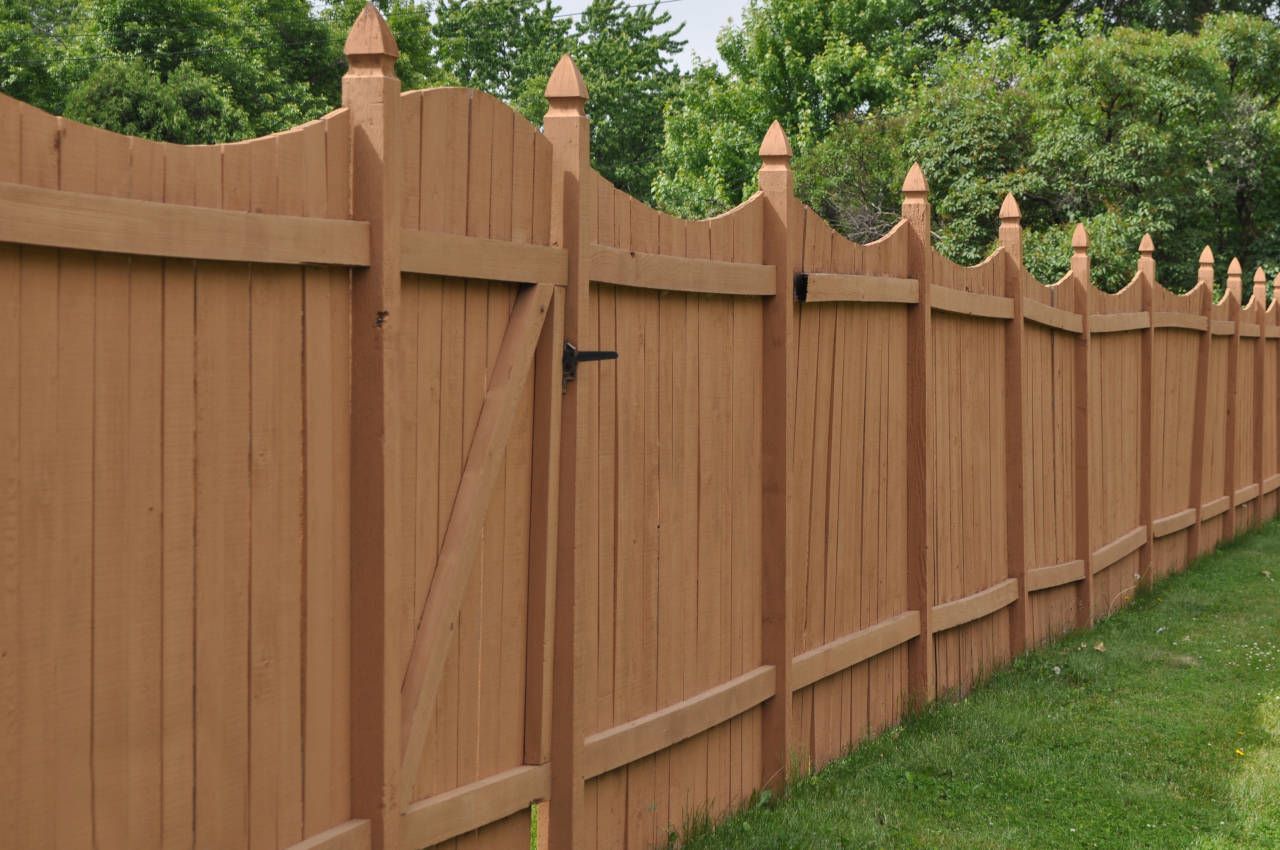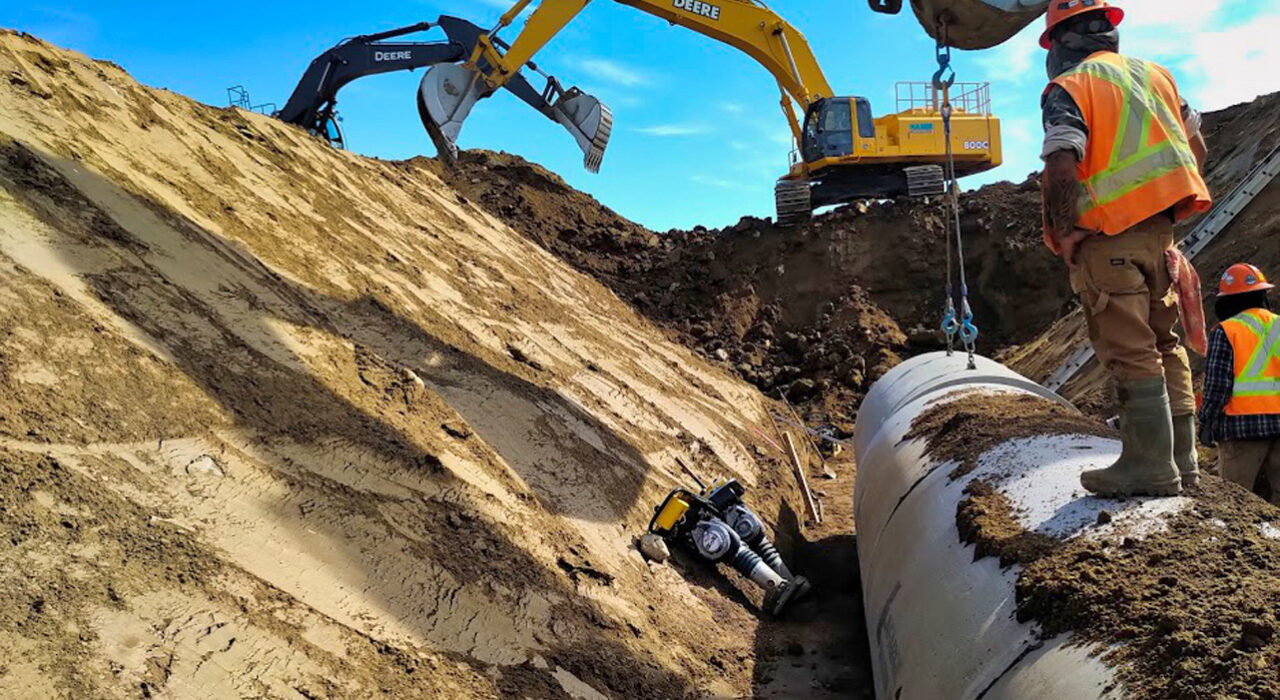

Articles
Who Owns A Fence On A Property Line
Modified: December 7, 2023
Discover who legally owns a fence on a property line with our informative articles. Find answers to your questions and understand your rights as a homeowner.
(Many of the links in this article redirect to a specific reviewed product. Your purchase of these products through affiliate links helps to generate commission for Storables.com, at no extra cost. Learn more)
Introduction
When it comes to property ownership, it’s not uncommon to find shared boundaries with neighboring properties. These boundaries raise questions about the ownership and responsibility of structures that may straddle them, such as fences. In this article, we will delve into the concept of property lines and discuss the ownership of fences that sit on these boundaries.
Understanding property boundaries is essential for homeowners and property owners to navigate various legal and practical considerations. This knowledge helps determine the extent of their property rights and responsibilities. Additionally, knowing where property lines lie can avoid potential conflicts and disputes with neighbors.
Join us as we explore the intricacies of identifying property lines, the shared ownership of fences, communication between neighbors, and the legal considerations surrounding such matters.
Key Takeaways:
- Understanding property boundaries and shared fence ownership is crucial for harmonious coexistence. Open communication, legal awareness, and cooperation with neighbors are key to resolving disputes and maintaining positive relationships.
- Property owners should recognize shared fence ownership, communicate openly, and seek legal guidance when disputes arise. By understanding rights, responsibilities, and legal considerations, they can navigate fence ownership with confidence and respect.
Read more: How Close Can Fence Be To Property Line
Understanding Property Boundaries
Property boundaries establish the legal limits of a property owner’s rights and responsibilities. They define the area of land owned and provide a clear distinction between one property and another. Property boundaries typically consist of lines that run along the edges of a property, often demarcated by survey markers or physical structures like fences or walls.
The establishment of property boundaries is governed by local laws and regulations. These laws are in place to provide clarity and prevent disputes between property owners. In many jurisdictions, property boundaries are determined and recorded through a survey conducted by a licensed surveyor.
A property’s legal description, which includes information about its boundaries, is usually documented in the property’s deed or title. The deed outlines the specific dimensions and measurements of the land, allowing property owners to understand the exact location and extent of their property.
It is important to note that property boundaries are not always perfectly straight lines. They can be irregular and follow natural features, such as rivers or mountains. In some cases, neighboring properties may have overlapping boundary lines. These complex scenarios require careful consideration and accurate documentation to avoid conflicts.
To determine the precise location of a property boundary, property owners may refer to the survey conducted at the time of purchase. This survey will indicate the boundary lines and any physical markers that were identified. In case the existing survey is ambiguous or unavailable, property owners may need to hire a professional surveyor to conduct a new survey and define the property boundaries accurately.
By understanding the concept of property boundaries, homeowners can gain clarity on the extent of their property and the rules that govern their ownership. With this knowledge, property owners can proceed confidently in addressing any issues related to structures, such as fences, that sit on the property line.
Determining the Property Line
Determining the precise location of a property line is crucial when considering the ownership and responsibility of structures like fences that straddle these boundaries. Here are some common methods used to determine the property line:
- Property Surveys: Property surveys conducted by licensed surveyors provide the most accurate depiction of property boundaries. These surveys use precise measurements and markers to establish the boundaries, including any corner markers or pins.
- Deed or Title Documents: The property’s deed or title may contain information about the property boundaries. This documentation may include a legal description of the property, including boundary measurements or references to adjoining properties.
- Historical Records: Historical records, such as old survey maps, property tax records, or land grant documents, can sometimes provide insights into the property boundaries. These records may require additional research and validation to confirm their accuracy.
- Adjacent Structures: Observing existing structures, such as fences or walls, on neighboring properties can provide a general indication of the property line. However, it is important to note that these structures may not always accurately represent the legal boundaries.
- Physical Markers: Property lines may be marked by physical indicators, such as metal stakes, wooden posts, or concrete monuments. These markers may have been placed during the initial property survey or by previous property owners.
In most cases, property surveys are considered the most reliable method for determining property lines. They provide accurate measurements and establish legal boundaries recognized by local authorities. Property owners can access this information by referencing their property’s survey or by commissioning a new survey to establish the current boundaries.
It is important to note that property lines may not always be visually distinguishable on the ground. In situations where there is uncertainty or disagreement regarding the precise location of the property line, it may be necessary to consult with a professional surveyor or a real estate attorney to resolve the issue.
By utilizing these methods and seeking professional guidance where necessary, property owners can establish the exact location of their property lines. This knowledge is vital when it comes to determining the ownership and responsibilities of structures that intersect these boundaries, such as fences.
Shared Ownership of Fences on Property Lines
When a fence is located on a property line, it often raises questions about the ownership and responsibilities associated with it. In many cases, fences that straddle property lines are considered to be shared or jointly owned by adjacent property owners.
The shared ownership of a fence means that both neighbors have equal rights and responsibilities regarding its maintenance, repair, and replacement. This concept is often governed by local laws or regulations that outline the responsibilities of neighboring property owners when it comes to shared structures.
In some jurisdictions, there may be specific rules regarding the construction and upkeep of boundary fences. For example, local ordinances may require property owners to split the costs of constructing a fence or to alternate the side of the fence they are responsible for maintaining.
It is important to establish clear communication and understanding between neighboring property owners when it comes to shared fences. This includes discussing and reaching an agreement on matters such as fence design, maintenance schedules, and cost-sharing arrangements.
Agreements regarding shared fences can be formalized through written agreements or informal arrangements between neighbors. These agreements should outline the responsibilities of each party, including financial obligations, maintenance duties, and any limitations or restrictions on the use of the fence.
Shared ownership of a fence on a property line also means that any alterations or modifications to the fence should be agreed upon by both neighboring property owners. This includes situations where one neighbor wants to replace the fence or make changes to its design.
It is important to note that the concept of shared ownership may vary depending on local laws and regulations. Therefore, it is advisable to consult with local authorities or seek legal advice to understand the specific rules and obligations governing shared fences in your area.
By recognizing and acknowledging the shared ownership of a fence on a property line, neighboring property owners can work together to ensure its proper maintenance and avoid potential conflicts or disputes.
It’s important to check the property deed or survey to determine who owns a fence on a property line. If it’s not clear, consider discussing with your neighbor and possibly hiring a surveyor for clarification.
Communication and Agreement between Neighbors
When it comes to shared structures like fences on property lines, open communication and reaching agreements with neighboring property owners are essential for maintaining good relationships and avoiding disputes. Here are some key aspects to consider for effective communication and agreement:
- Initiating Conversations: It is important to start the conversation with your neighbor regarding the shared fence. Approach the discussion with respect and a willingness to find a mutually beneficial solution. This can help establish a positive tone for the conversation.
- Identify Concerns and Goals: Clearly communicate your concerns and goals regarding the fence. Discuss any issues you may have, such as maintenance, repairs, or desired changes. Listen to your neighbor’s perspective and try to find common ground.
- Research Local Laws and Regulations: Familiarize yourself with the local laws and regulations applicable to property boundaries and shared structures. This knowledge can provide valuable insights and guide the discussion with your neighbor.
- Explore Options: Brainstorm together to explore different solutions and options. This may include discussing maintenance responsibilities, cost-sharing arrangements, or potential design changes. Be open to compromise and finding a solution that benefits both parties.
- Formalize Agreements: If a consensus is reached, consider formalizing the agreement in writing. This can help prevent future misunderstandings or disputes. Include details such as maintenance responsibilities, cost-sharing arrangements, and any restrictions or alterations to the fence.
- Get Professional Advice: In complex situations or if disagreements arise, it may be helpful to seek professional advice. Consult a real estate attorney or mediator who can provide guidance and help facilitate a resolution.
- Maintain Regular Communication: Once an agreement is reached, it is important to maintain open lines of communication with your neighbor. Regularly check in to ensure that both parties are fulfilling their responsibilities and address any concerns that may arise.
Remember, maintaining a positive and respectful relationship with your neighbor is key. Approach the discussion with empathy, compromise, and a willingness to find common ground. Effective communication and agreements can help foster a harmonious coexistence and ensure the proper maintenance and care of shared fences on property lines.
Read more: How To Determine Who Owns A Fence
Disputes and Legal Considerations
Despite best efforts in communication and reaching agreements, disputes over shared fences on property lines can still arise. When conflicts occur, it is important to understand the legal considerations involved. Here are some points to consider:
Review Local Laws and Regulations: Familiarize yourself with the local laws and regulations that govern property boundaries and shared structures. Understand your rights and responsibilities as a property owner, as well as any specific legal requirements for resolving disputes regarding fences.
Mediation and Negotiation: In case of a dispute, consider engaging in mediation or negotiation to find a resolution. A professional mediator can assist in facilitating discussions and working towards a mutually acceptable solution.
Consult a Real Estate Attorney: If you are unable to reach an agreement or if the dispute escalates, it may be necessary to consult a real estate attorney. They can provide legal advice, represent your interests, and guide you through any potential legal proceedings.
Evidence Gathering: In the event of a dispute, gather evidence to support your position. This may include property surveys, photographs of the fence, correspondence with the neighbor, and any other relevant documentation. Proper documentation can strengthen your case and provide a factual basis for resolving the dispute.
Alternative Dispute Resolution: Depending on the jurisdiction, there may be alternative dispute resolution methods available, such as arbitration or small claims court. These processes offer a less formal and more cost-effective means of resolving disputes without going through a full legal trial.
Boundary Line Determination: In more complex cases where the exact location of the property line is in dispute, a professional surveyor may need to be hired to conduct a boundary line determination. This can help establish the correct location of the property line and inform the resolution of the fence ownership dispute.
Adherence to Court Orders: If the dispute escalates to legal proceedings and a court order is issued, it is crucial to adhere to the terms outlined in the order. Failure to comply with a court order can lead to further legal consequences.
When disputes arise, it is important to approach the situation with a willingness to resolve the issue in a fair and reasonable manner. By being aware of the legal considerations and seeking appropriate advice, property owners can navigate fence ownership disputes while minimizing the impact on their relationships with neighbors.
Concluding Thoughts
Property boundaries and shared structures, such as fences on property lines, can sometimes be sources of confusion and disputes between neighbors. However, with a clear understanding of property rights, effective communication, and knowledge of the legal considerations, many of these issues can be resolved in a fair and amicable manner.
Recognizing the shared ownership of a fence on a property line is essential. By understanding the responsibilities and obligations that come with this shared ownership, neighbors can work together to ensure the proper maintenance, repair, and replacement of the fence.
Open communication and reaching agreements with neighboring property owners lay the foundation for a harmonious coexistence. By discussing concerns, goals, and finding mutually beneficial solutions, property owners can establish clear expectations and avoid potential disputes.
In cases where disagreements arise, it is crucial to refer to local laws and regulations, consider mediation or negotiation, and seek professional legal advice when necessary. These steps can help address disputes effectively and reach a resolution that is fair and in compliance with the law.
Ultimately, fostering positive relationships with neighbors and maintaining open lines of communication are pivotal in addressing shared structures and property boundary concerns. By engaging in respectful conversations, adhering to legal requirements, and seeking amicable resolutions, property owners can navigate fence ownership disputes and ensure the preservation of neighborly bonds.
Remember, property lines and shared structures can be complex, and laws and regulations may vary depending on the jurisdiction. It is always recommended to consult with professionals who specialize in real estate or property law for accurate advice tailored to your specific situation.
By understanding the intricacies of property boundaries, recognizing shared ownership, and engaging in effective communication and cooperation, property owners can navigate the complexities of fence ownership on property lines with confidence and harmony.
Frequently Asked Questions about Who Owns A Fence On A Property Line
Was this page helpful?
At Storables.com, we guarantee accurate and reliable information. Our content, validated by Expert Board Contributors, is crafted following stringent Editorial Policies. We're committed to providing you with well-researched, expert-backed insights for all your informational needs.















0 thoughts on “Who Owns A Fence On A Property Line”